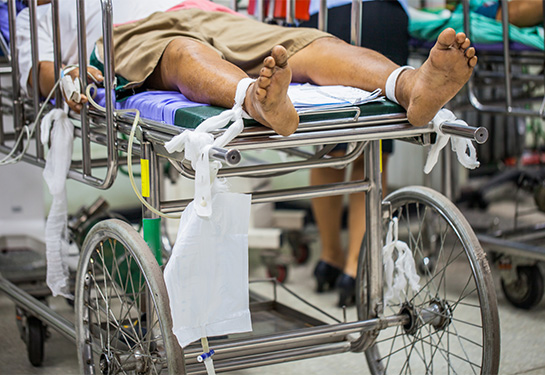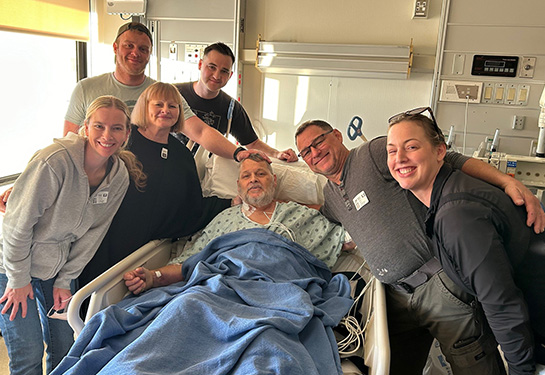New study shows Black patients more likely to be restrained than other racial groups
‘We are failing these patients’: Researchers call for protocols to combat these disparities
A new study published in JAMA Internal Medicine found that Black patients are more likely to be physically restrained in the hospital than adults from other racial groups.
The study, published by researchers from UC Davis Health, UC San Francisco and Baylor College of Medicine, showed restraints were used in less than 1% of emergency room visits. However, Black patients were 31% more likely to be placed in restraints than white patients.
“As a group of emergency physicians, we observed anecdotally that underrepresented patients tended to be restrained more often,” explained David Dillon, assistant professor of Emergency Medicine at UC Davis Health and one of the study’s authors. “Therefore, we did a meta-analysis of all the data we could find published on the topic and the results supported our observations.”
Study results
The researchers looked at studies that met four criteria:
- Published in English
- Had original human participants
- Performed in an adult emergency department
- Reported an outcome of physical restraint use by patient race or ethnicity
A total of 10 studies met the criteria and were included in the review.
Overall, use of physical restraints was not common. Of the nearly 2.5 million patient encounters included in the analysis, there were just over 24,00 events of physical restraint, meaning emergency medicine clinicians used restraints less than 1% of the time.
Within the 10 studies, four found a positive association between Black patients and restraints, while another found no relation, and a sixth found a positive association between multiracial background and restraints. Overall, Black patients were restrained 31 percent more often than white patients.
What is a physical restraint?
Researchers noted that a physical restraint is “any mechanical device that impedes a patient’s voluntary movement”.
The use of physical restraints may be used in emergency departments to ensure the safety of the patient, the care team, and other patients when less restrictive measures have proven ineffective.
“One of the problems with the use of physical restraints is that there are protocols on how we do it, but not necessarily protocols on when it is implemented,” Dillon explained. “If we could create specific protocols for when physical restraint should be used, it would remove some of these conscious or unconscious biases that go into making that decision.”
Explaining the data
The study did not directly address the underlying reasons Black patients are at greater risk of being physically restrained than other groups, but the researchers did have some theories.
“We don't necessarily have data from this study to support this, but there is circumstantial evidence from some literature that suggests these results are due to systemic racism within the health care system,” said Dillion.
Other studies have shown that patients with a history of mental health disorders were more likely to be restrained. It also found that Black patients are less likely to have access to outpatient behavioral health treatment, which could increase their risk of agitation in the emergency room and their risk of being restrained.
“All of this paints a picture that as a system we are failing these patients,” added Dillon.
All of this paints a picture that as a system we are failing these patients.”—David Dillon
The study did highlight the low quality of data available to the researchers. Of the thousands of studies that touched on use of restraints in the emergency department, only a small handful met the broad criteria set up for the analysis.
“We must continue to do further research to assess why there are racial disparities in the use of physical restraints in the emergency department and what can be done to prevent them from continuing,” said Dillon.





